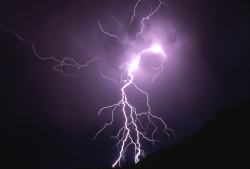
Courtesy US NPS, J Schmidt, Photographer
Yellowstone Weather Collection
Two days later, I discover a friend was caught in a storm of similar magnitude while exploring high country in the Bear River Range of Northern Utah. He too felt nature’s omnipotence, describing it as heavy battlefield artillery.
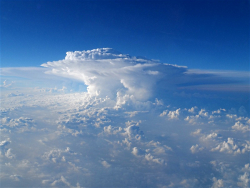
Courtesy NOAA Photo Library, Jane Hartman, Photographer
The earth’s onionskin-thin atmosphere is a rich soup from microscopic life and dust particles to avifauna and airplanes. Uniform to the eye, its mixture is anything but. Examine a column of air most anywhere and you’ll find it different from any other air column. The components found in this heterogeneous mixture are of endless variety as any atmospheric chemist will tell you.
Many aerosol substances of natural origin are present in locally and seasonally variable amounts, including dust of mineral and organic composition, pollen and spores, sea spray, and volcanic ash to name a few. Various industrial pollutants also may be present as gases or aerosols, such as chlorine and fluorine compounds and elemental mercury vapor. Sulfur compounds such as hydrogen sulfide, sulfur dioxide, and oxides of nitrogen may be derived from natural sources or from industrial air pollutants.
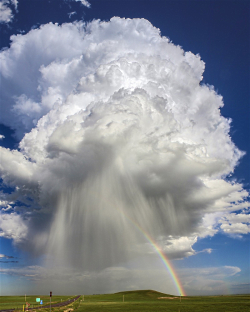
Courtesy NOAA Photo Library, Jared Rackley, Photographer
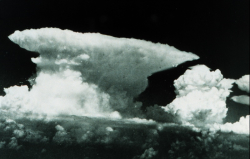
(Cumulonimbus Capillatus)
Courtesy NOAA
NOAA Photo Library
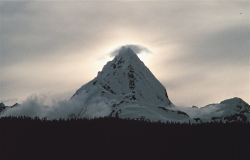
Courtesy NOAA Photo Library, Commander John Bortniak, Photographer
More reason to marvel at our miracle planet, more reason to celebrate its beauty, mystery, and fragility.
Jack Greene representing Bridgerland Audubon, and I’m wild about Utah!
Credits:
Images: Courtesy NPS, Yellowstone Weather Collection, J Schmidt, Photographer
Courtesy NOAA, NOAA Photo Library, Jane Hartman, Photographer
Courtesy NOAA, NOAA Photo Library, Jared Rackley, Photographer
Courtesy NOAA, NOAA Photo Library
Courtesy NOAA, NOAA Photo Library, Commander John Bortniak, Photographer
Audio: Courtesy & Copyright Ewing Nunn
Text: Jack Greene, USU Sustainability Program Volunteer, Bridgerland Audubon Society
Additional Reading:
Basic Weather Education, Corpus Christi, National Weather Service, https://www.weather.gov/crp/weather_education
Educational resources, National Headquarters, National Weather Service, https://www.weather.gov/learning
Weather & Atmosphere Education, National Oceanic and Atmospheric Administration, https://www.noaa.gov/weather-atmosphere-education
Air Quality, Chemical Sciences Laboratory, National Oceanic and Atmospheric Administration, https://www.esrl.noaa.gov/csl/research/airquality.html
Utah Winter Fine Particulate Study (UWFPS), Chemical Sciences Laboratory, National Oceanic and Atmospheric Administration, https://www.esrl.noaa.gov/csl/groups/csl7/measurements/2017uwfps/
Larese-Casanova, Mark, Utah’s Changing Climate and Weather, Wild About Utah, December 21, 2011, https://wildaboututah.org/utahs-changing-climate-and-weather/
Strand, Holly, Wind, Hold on to Your Hat!, Wild About Utah, June 16, 2011, https://wildaboututah.org/hold-on-to-your-hat/
Strand, Holly, Baby, It’s Cold Outside, Wild About Utah, January 17, 2013, https://wildaboututah.org/baby-its-cold-outside/
Cane, James, Kervin, Linda, Virga: Teasing Rain, Wild About Utah, August 12, 2010, https://wildaboututah.org/virga/
